Jean-Michel Basquiat’s crown motif appears so often in his art it has become a recognizable symbol in popular culture, appearing on everything from t-shirts to tattoos. Here are 19 examples of crowns in Basquiat’s paintings, along with musings on their meanings.
Basquiat’s crown evokes a subversive, emotional aesthetic. Its appropriation by other artists and designers, whether in homage or blatant heist, authenticates its position as an icon that deeply resonates in today’s culture.
But what does the prolific crown emblem mean, and why was the artist so obsessed with it? While many critics have weighed in, most interpretations boil down to a handful of ideas about what the crown symbolizes:
- The artist himself as king.
- The artist’s association with people he considered kings.
- The artist’s ambition to become great.
On his fascinating website, Every Painter Paints Himself, art historian Simon Abrahams explores the first two of these interpretations, suggesting that Basquiat was carrying on an established convention of artists throughout history painting their own likenesses into their portraits of kings.

Abrahams interprets the figure on the left side of the Red Kings painting as Basquiat himself, and suggests the skull figure on the right as representing Pablo Picasso.
It’s interesting that the crowns in this earlier work have more points, whereas in paintings that follow it took on a simpler three-pointed shape. A common theory is that the three-point crown signifies the letter W to stand for Warhol, whom Basquiat befriended and greatly admired.
But we know from his interview with Anthony Haden-Guest in True Colors: The Real Life of the Art World that Basquiat was very interested in the power of logos, explaining his SAMO© graffiti tag as such. The younger Basquiat and his friends had plastered New York’s SoHo neighborhood with this acronym for “same old shit,” as a commentary on the exclusivity of the art world, but also perhaps to build notoriety in preparation for his entry into that world.
So a simpler, three-pointed crown could better function as a logo, to proliferate beyond the artworks themselves to the wider culture, and stamp the artist’s legacy in the minds of mass audiences. Nick Curtis describes the crown as a proxy artist’s signature, and this ties in perfectly with its interpretation as a signal of Basquiat’s determination and ambition to rise up from obscurity.
Basquiat’s crown acts as a perfect complement to his fascination with the human head and skull. The two themes — crowns and heads — proclaim a deep struggle between dichotomies: perceived self-worth and marginalization, divinity and destitution, and the interplay between the material world and the intellect.
The turbulent life and times of the renowned artist have been well-documented through books, television, and films. Basquiat managed to create a lasting art legacy through his creations, before his untimely demise from a heroin overdose in 1988, at the age of 27.
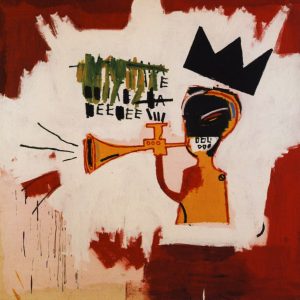
Like many great artist through history, his greatness and appeal grew significantly after his death. The art world and pop culture as a whole, has a way of getting to the core of the exceptional artist and learning more about what made them who they are. This in-depth review of the person being examined often comes after their death, and their status can grow significantly as more is understood about them.
Basquiat’s work is still in a state of great debate to this day. Attempts to interpret the meaning of his paintings will likely go on indefinitely due to the abstract nature of many of them. This mysterious aspect of his work helps to keep his legend alive and drive art collectors to pay multi millions in order to purchase some of his most celebrated original works.
In similar fashion to the average person and great artist alike, Basquiat was shaped by his experiences, desires, and upbringing. The emotions he held within himself would come to life in his works for the world to see what he wanted to express. His artwork seemed to be quite therapeutic for him while in the creation process, but the trying times that he experienced in-between this therapy is what ultimately lead to his shortened time on earth.
Fortunately, he was able to leave a lot of clues and visual expressions in his art that displayed his genius and character.
A Majestic Crown That Is Suitable For a Young King
The crown symbol has been apart of Basquiat’s art since his early graffiti days in New York and made a powerful statement with a simple design. It is a great testament to the power of Basquiat’s art that he was able to make his crown motif with such a basic style, and still leave such a strong impression.
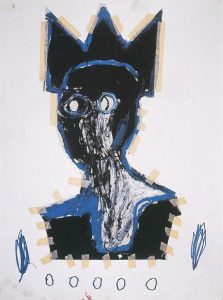
His attention to the stripped-down, raw human form may have begun as a young child, pouring over the pages of Gray’s Anatomy, given to him by his mother. Her influence on his art direction and her eventual mental illness, combined with the distant relationship he shared with his father, may have influenced him to want to be the king of his peer group.
Using this particular symbol in his art was a very clever act in itself. Since his days of doing art on the streets of New York, Basquiat excelled with the marketing aspect of his work. He would graffiti prime locations that could be noticed by many people, including those with power and influence. The crown tends to spark a reaction from so many people and is very versatile in meaning. It can be used in a variety of different works and represent something different each time it is utilized.
It would be no big surprise to learn that the same artist who had self-image issues, struggled to find inner peace, and lingering self-doubt would crown himself. Expressing the special nature about himself through his art may have been a way for him to show the world what he believed to be true about his place in the world while reassuring himself of the same thing.

The crown is universal a symbol, easy to understand by children and adults, rich and poor, sophisticated and naive people alike. It may represent different things to different people but using a symbol that has so much mass appeal and is so easily recognizable served Basquiat very well and only helped to raise his stature.
Fittingly, Basquiat’s own head was crowned by dreadlocks. The free and complex nature of dreads made for the most appropriate hairstyle for the young Basquiat to wear.
Basquiat was known to have special inner qualities that were noticed by those who knew him at a young age, and he behaved as if he was some sort of royalty. The fact that he was a very knowledgeable child who understood history and art helped him realize the power of symbols and how he could use them in his self-expression.
Like many young graffiti artists, he wanted to be seen, heard, and acknowledged. Using a crown as a sort of logo in his art, he may have been telling the world to take notice and recognize the young king making his mark.
His Cultural Awareness and Activism Were Not Compromised
The black experience from ancient times up until the conscious rap music of the 1980s would also play a key role in Basquiat’s art. He was aware of the struggles and strengths of black men and women and would incorporate these themes in some of his work.
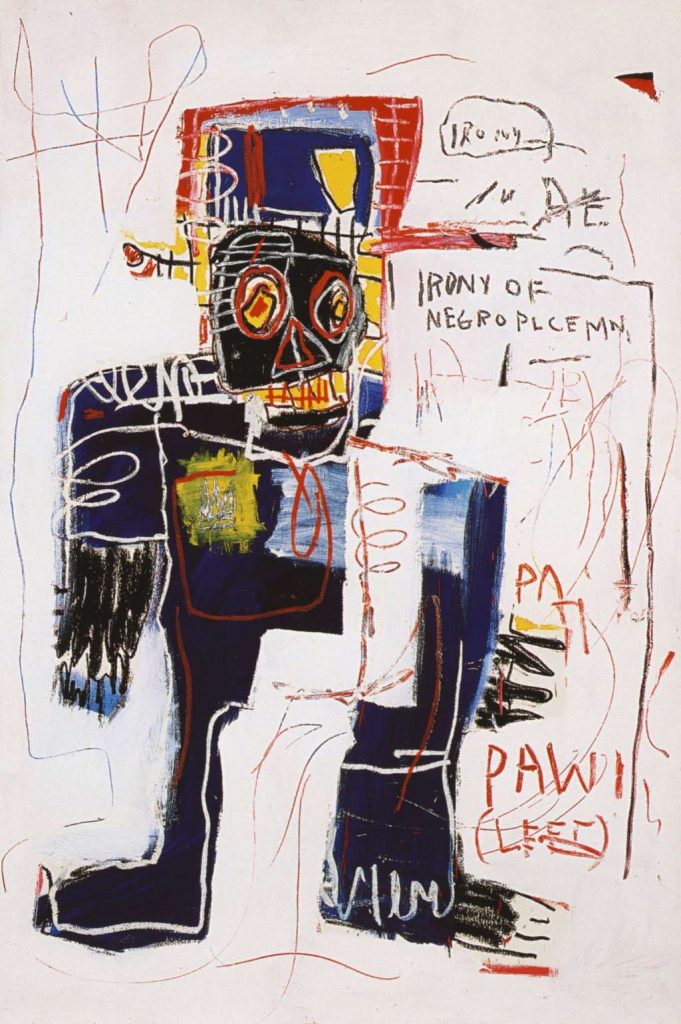
His neo-expressionist piece “Irony of the Negro Policeman” displays his opinion of black police officers in the form of an abnormally shaped person with a silly expression on his face.
The word “pawn” can also be found near the bottom of this piece and may reflect what Basquiat felt the role of black police officers represented. This painting is notably devoid of the crown symbol and instead just features a hat that appears heavy and restraining. Basquiat’s thoughts and views were expressed in a very transparent manner compared to his more abstract paintings.
The use of complete words on the canvas and a full-bodied person on display seems to indicate that Basquiat wanted this painting to convey a clear message that would not have to be left up to interpretation by the viewer.

This form of expression coincided with the political and racial and activism of the early rap scene of 1980s. While hip hop was blossoming in New York and spreading to the world, the participants expressed themselves through rhymes, dance, graffiti art, and mixing records to create a culture of their own.
Basquiat could be found attending some of these early hip hop functions and made for a great representative for those youths that were so eager to find ways to express themselves.
It is no accident that you see the same sort of crown symbols used on hip hop inspired clothing and record covers that you can find in some of Basquiat’s art. He is a significant part of that movement as well.
While he was aware of his black roots and proud to express his personal views in his art, Basquiat wanted to be recognized as a great artist, regardless of skin color.
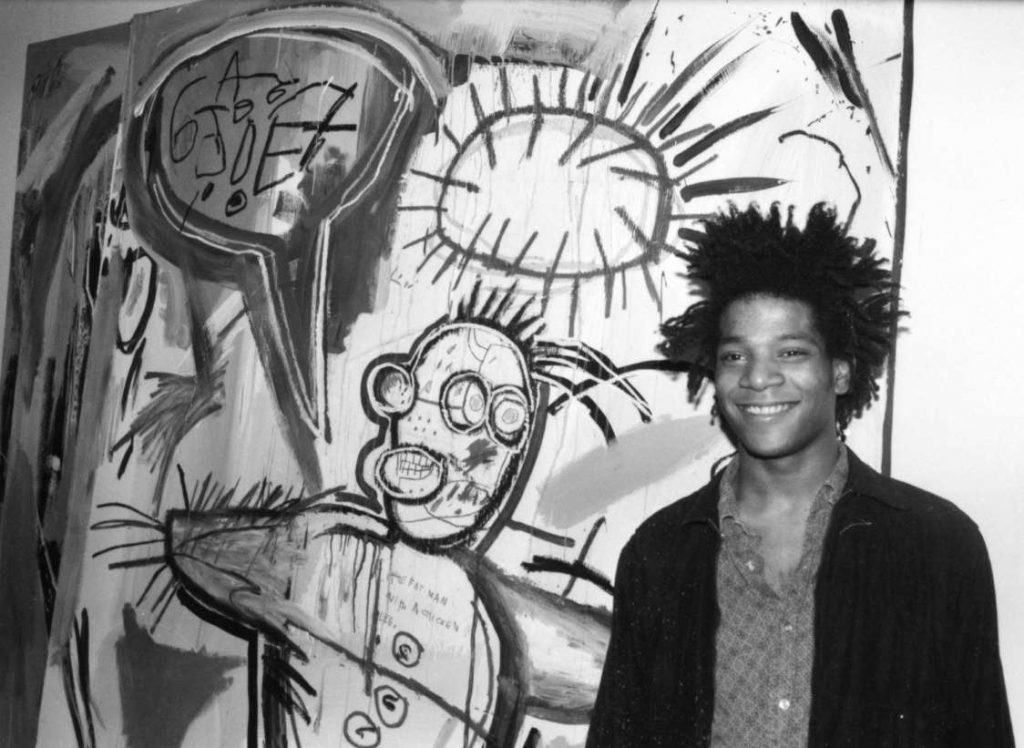
He once was quoted as saying “I am not a black artist, I am an artist…” This quote further illustrates the complex nature of the young artist and his desire to stand out as a king among all artists.
His desire to include more black figures in his art stemmed from the lack of black people in other paintings that he observed.
Jean Michel Basquiat Documentary – The Radiant Child
A Fair Warning to Those Who Want to Be King
In Basquiat’s renowned painting “Charles the First” you can find a lot of his trademark style flowing in every direction.
The crown motif is prominently featured inside of a square with the name “Thor” underneath it, in the upper left corner of the painting. This could be Basquiat connecting the crown and nobility to a God-like status that often given to royal families.

While the crown symbol seems to be assigned to the artist himself in some of his works, this particular painting may not be so personal.
Near the bottom of the painting, the words “most kings get thier head cut off” is written. Why the word “their” is misspelled can be a common mistake or some sort of intentional act by the artist.
While Charles the First was beheaded at a young age, this painting may also reflect the anguish that Basquiat felt in his life as a rising star.
A Fitting Tribute from One Beautiful Artist to Another
In 1988, fellow New York artist Keith Haring, a friend of Basquiat, created a piece dedicated to the deceased artist entitled “A Pile of Crowns for Jean-Michel Basquiat.”

Like Basquiat, Haring came up through the New York graffiti art scene and served as a sort of torchbearer for holding the crown in New York after Basquiat died in 1988.
Haring created this painting that same year and made the pyramid-shaped structure in the center of it entirely out of crowns.
This large pile of crowns seemed to display the respect Haring had for Basquiat by incorporating his signature crown so prominently in the piece.
Sadly, Haring would only have two more years to wear the crown as he died just two years later in 1990, at the age of 31. Kings really do die young sometimes, though some manage to create a lasting legacy while they are here.
All Kings Die, Some Live Forever
The young king, Basquiat, left his mark on the world and has not been forgotten. In 2016, an untitled painting depicting a devil-like figure with red horns sold for over 57 million dollars at auction. This total surpassed the expected winning bid estimates and set a new auction record for a Basquiat painting.
The angst and doubt Jean-Michel Basquiat experienced as a young artist, concerning his standing and worth, proved to be misguided in the long run, as he grows in popularity in the art world and American pop culture.

Like many other great artists before and after him, Basquiat did not live to see the full impact and appreciation that his art would eventually gain.
He may have never had the chance to fully grow into what he could have become, but the percentage of himself that he did shine on the world was incredibly impressive.

The need to reach the top of the ladder and do it in his own special way seemed to be a lifelong obsession that Basquiat was indeed able to accomplish in such a short time here.
Though the crown may be heavy on the head, he earned the right to wear it.


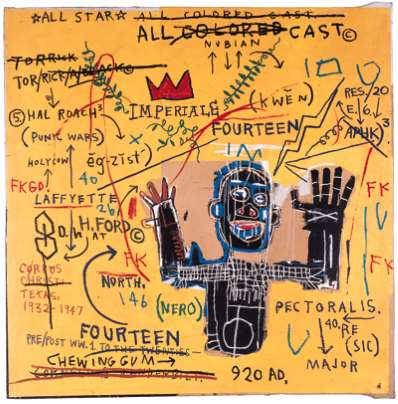
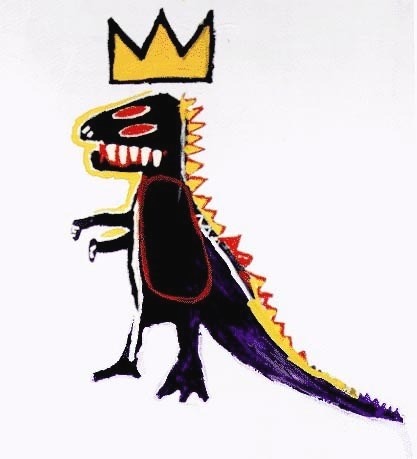





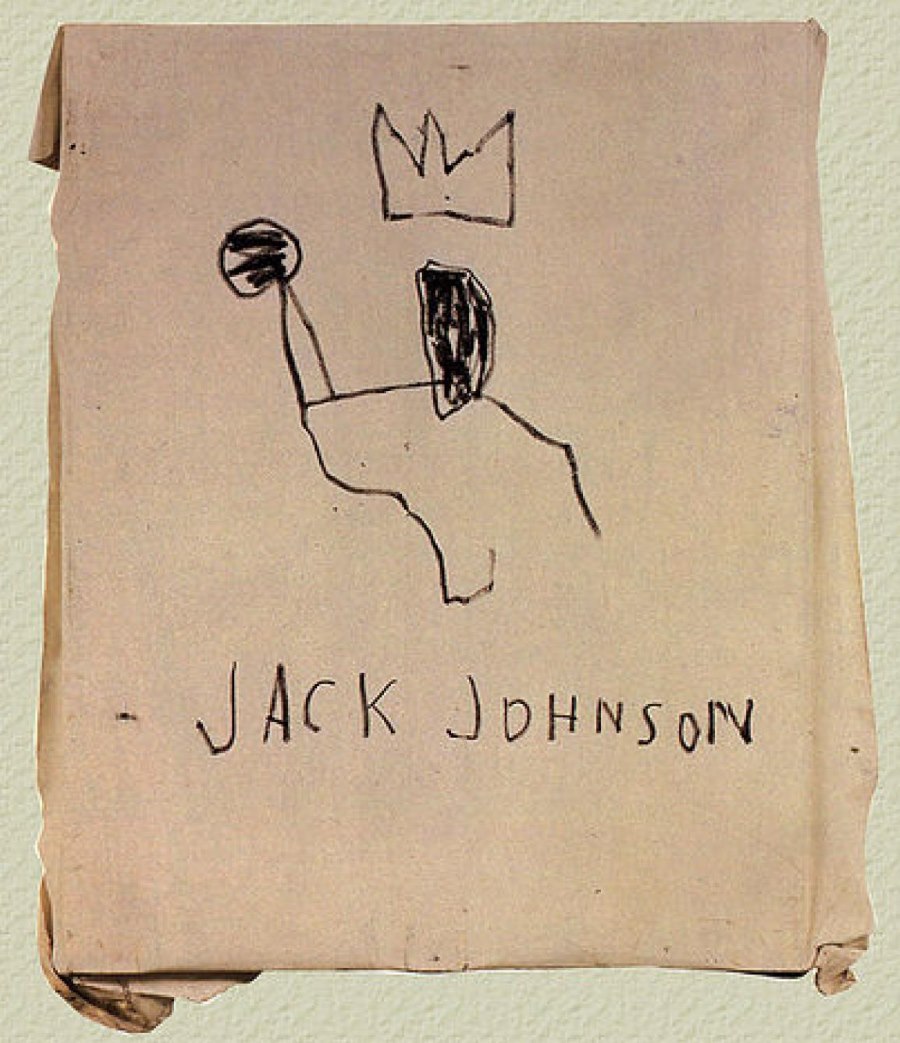
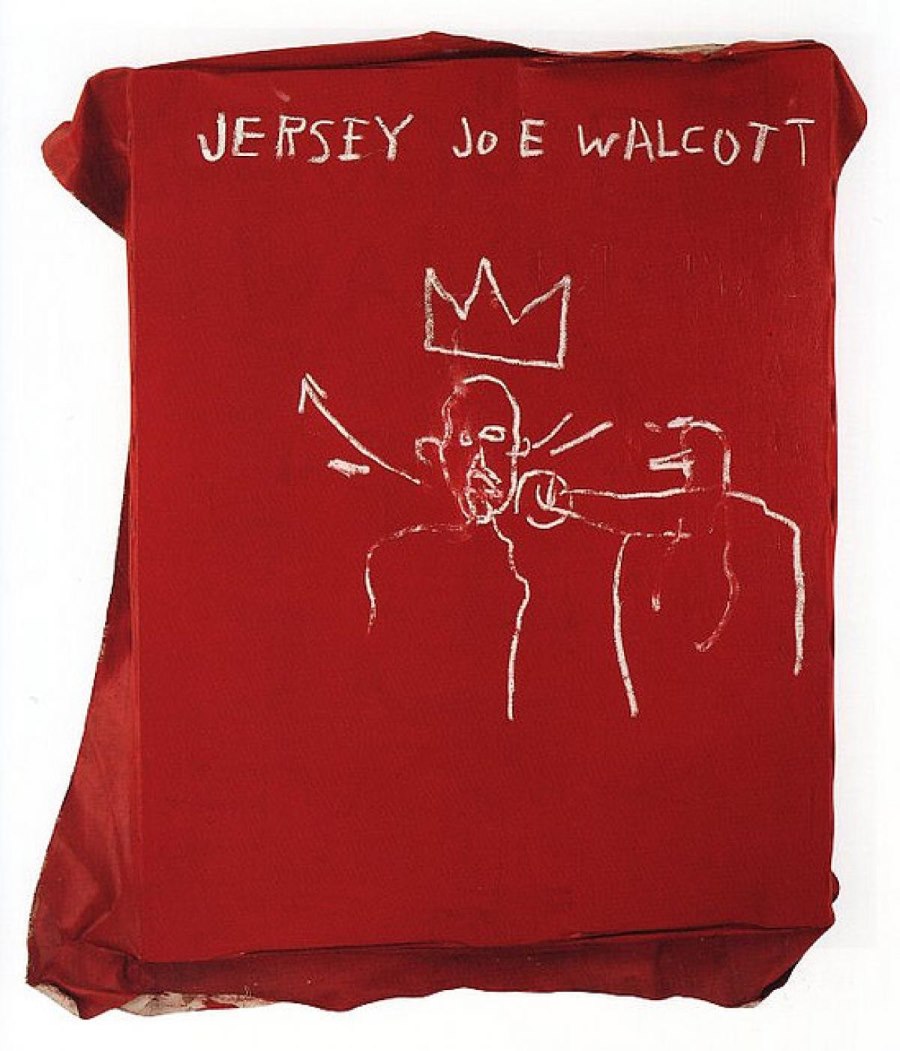
Further reading:
Reading Basquiat: Exploring Ambivalence in American Art, Jordana Moore Saggese (University of California Press, 2014)

What is your interpretation of the halos in his paintings? Similarities/distinctions? I see them as much, if not more, than the crowns…
halos are common in graffiti to honor a dead person
The constant struggle of urban decay is basquiat;the drugs;crime;police brutality;is on showcase in his soul of paintings;BASQUIAT THE KING;his paintings;music;graffiti tags ;seen as a wise journalists carousing the canvas of inner-city ghettos;BASQUIAT struggles with futurism and FATALISM;;being able to see the future;but knowing ;he will not live in the future;fatalism submitting to landscape of drug use ;using these euphoric rushes of drug cocktails,to experiment with his politics of crummy art;seeing himself as an inner-city prophet;the paintings of basquiat ,in his prime “81-84;show clarity ;authenticity ;theme;context;explaining his paintings;is a spiritual conquest of What matters ;what could change;what will never change;what basquiat completes at the end of his life;art that matters;in a dirty;filthy;very scary AMERICA; that cannot be explained but experienced.
i agree darren
Very deep, clear and concise. Thank you for your post.
Well said Darren. Basquiat, gone too soon.
spot on, you have put in words the exact feeling the pieces evoke.
Darren is sus
Spot on, you have put in words the exact feeling the pieces evoke.
This looks like it was made by a kindergartener
exactly! such wonderful rubbish, wouldn’t you say?
A true modern master. A visionary.
Could Basquiat’s Crown Be Inspired by Beckmann?
When looking at Max Beckmann’s Departure (1932–33), which has been on display at MoMA since 1942, I noticed something surprising: the crown in the central panel has almost the exact same proportions, with three stylized points. On top of that, Beckmann’s use of intense, primary colors against deep blacks feels strikingly close to Basquiat’s own chromatic language.
Since Basquiat lived and worked in New York, it’s entirely possible that he encountered Departure. So is this just a coincidence, or could Beckmann’s triptych have planted the seed for Basquiat’s most iconic motif?
As far as I know, no published analysis has drawn this connection. If that’s true, perhaps Beckmann deserves to be recognized as a hidden source behind Basquiat’s crown.
It’s almost certain he would have seen Departure on the same first trip to MoMA when he first saw Picasso’s Guernica, which he identified as the day he decided to become an artist. They were on the same floor, and it ‘s not as big as Guernica, but it’s big.